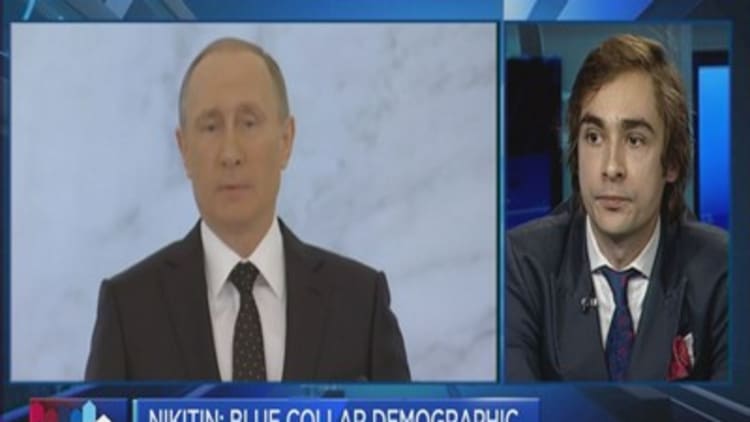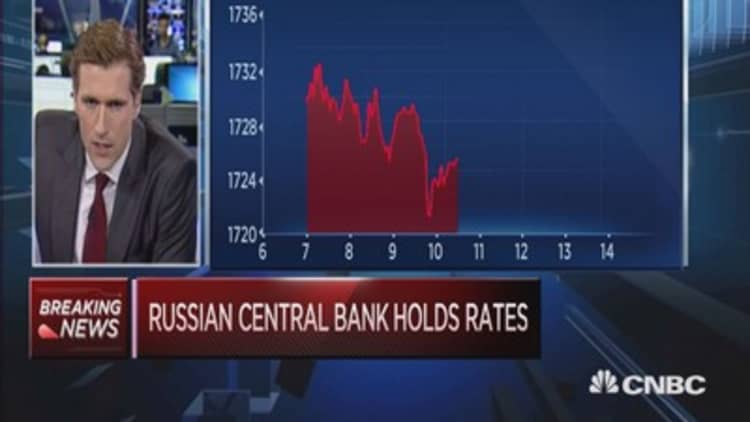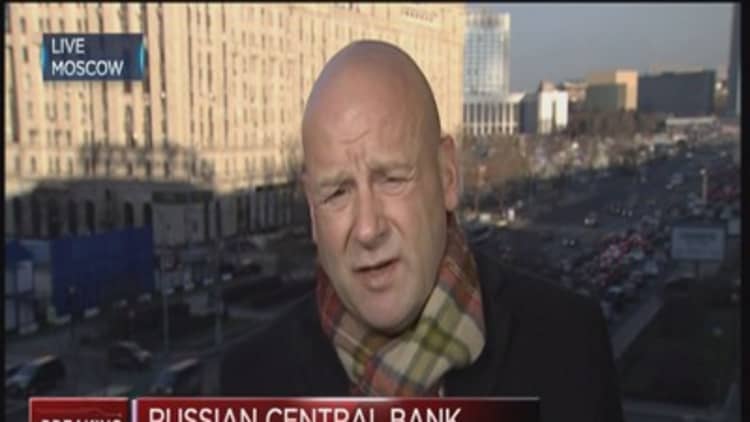



Uncertainty over the path of interest rates in the U.S. is causing investor concerns and market volatility, according to the governor of the country's central bank.
The Bank of Russia decided to keep rates on hold Friday but Governor Elvira Nabiullina used the opportunity to highlight external economic conditions and how they were affecting money flows in the emerging economy.
"External conditions remain complicated, with persistent unfavorable trends," she said in transcript of her speech on the bank's website.
She spoke of "high volatility" in world markets caused by frequent shifts in global investors' sentiment and expectations, adding that it was linked to several sources of uncertainty such as the expected pace of normalization of the U.S. Fed's monetary policy.
The bank's review of market participants' expectations, with regard to the rising path of the Fed's policy rate, has seen a reassessing of the attractiveness of assets, she said.
"We observe fluctuations in the world FX market, instability in the scope and directions of capital flows, and fluctuations in the stock and commodity markets," she said.
Russia's central bank decided to keep rates on hold at its latest monetary policy decision on Friday, a move widely expected as inflation remains stubbornly high.
The central bank held its key interest rate at 11 percent, citing "growing inflation risks while the risks of economic cooling remain."
The bank said that as inflation risks recede, it "will continue with a downward revision of its key rate, to be decided at one of its forthcoming Board of Directors meetings."
The bank believed that inflation, currently high at 15 percent although it has trended downwards, was hopefully heading in the right direction. It predicted annual consumer price growth of 6 percent by the end of 2016, close to the bank's target of 4 percent in 2017.
Speaking to CNBC from Moscow, Simon Fentham-Fletcher, chief investment officer at Freedom Asset Management, believed the bank had "missed a trick."
"The weather here is cooling rapidly and the Russian economy is cooling absolutely faster and the real economy is really struggling and there are inflationary pressures but on the whole, the downside risk to Russia is a stagnating economy and that's significantly being impacted by high interest rates," he told CNBC.
The ruble was trading at a dramatic low of 69.73 against the dollar ahead of the decision and weakened slightly to 69.84 afterwards.
A year ago, the central bank shocked markets by hiking interest rates to 17 percent from 10.5 percent in a bid to tame rampant inflation and ruble depreciation.
Throughout the year however – and perhaps under pressure from Russian President Vladimir Putin for the bank to help stimulate growth with lower rates in the recession-hit country – the bank has gradually decreased rates to their current level of 11 percent.
While many analysts had predicted no change from the bank, others had forecast as much as a 50 basis point cut, based on the logic that cutting rates would help to stimulate borrowing and give the economy a well-needed boost.
Bank Governor Elvira Nabiullina has opted for caution, however, amid volatile times for Russia on the geopolitical and economic front.
Not only is its economy expected to have contracted 3.8 percent this year, according to the International Monetary Fund, but it is dealing with further declines in the oil price, on which it relies for much of its government revenue, and rising geopolitical tensions with the West over its involvement in Syria.
That's not to mention the sanctions still in effect on the country for its annexation of Crimea and role in the pro-Russian uprising in Ukraine in 2014. After staging a brief recovery in May, the ruble resumed its slide and on Monday, for the first time since September, hit a low of 69 against the dollar.
Christopher Granville, managing director of Trusted Sources, told CNBC Friday that the oil price was a real inflation risk.
"There's the standoff with Turkey (after the country downed a Russian jet, prompting a food import ban from Russia) which means inflation as Turkish fruit and vegetables are banned and there's other things which will keep it high but above all, it's that oil price slump which places new pressure on the ruble."
The currency's weakness that has accompanied sanctions, capital outflows and a dramatic fall in oil prices – from $114 in June 2014 to currently just below $40 -- has contributed to prices rises of many basic goods. Poverty in Russia has risen as a result with2.3 million more Russians falling into poverty in the first nine months of the year, according to state statistics agency Rosstat and reported by the Moscow Times on Friday.




